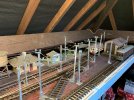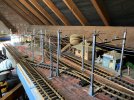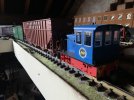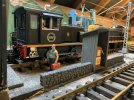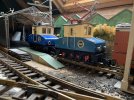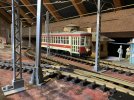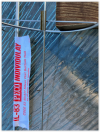Thanks David,
Yes, I did mean rail.
Unfortunately I made a couple of ebay purchases years ago when LGB went bankrupt and before MARKLIN. I finally had the opportunity to unbox the tram masts and found them to be LGBs first edition, without the clips. The figure 8 wire is quite difficult to find here in Australia but the clips are available. I had been multitasking how can I make LGB 6000 masts work with the 56204 & 56203 clips when I was referred to your post by someone who had come across your post.
Do the rails fit snugly in the clips or do they move around? Do they need to be soldered in place?
Thanks
Bill
Yes, I did mean rail.
Unfortunately I made a couple of ebay purchases years ago when LGB went bankrupt and before MARKLIN. I finally had the opportunity to unbox the tram masts and found them to be LGBs first edition, without the clips. The figure 8 wire is quite difficult to find here in Australia but the clips are available. I had been multitasking how can I make LGB 6000 masts work with the 56204 & 56203 clips when I was referred to your post by someone who had come across your post.
Do the rails fit snugly in the clips or do they move around? Do they need to be soldered in place?
Thanks
Bill

